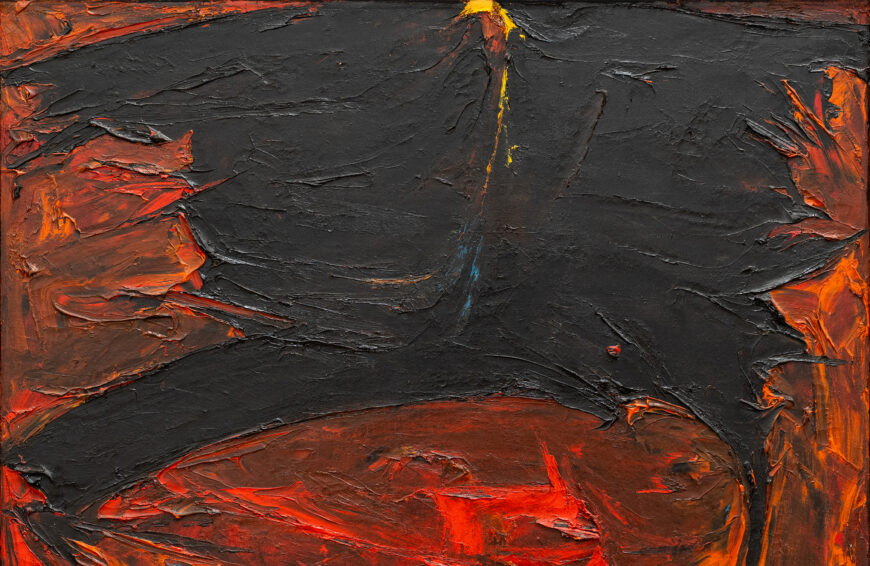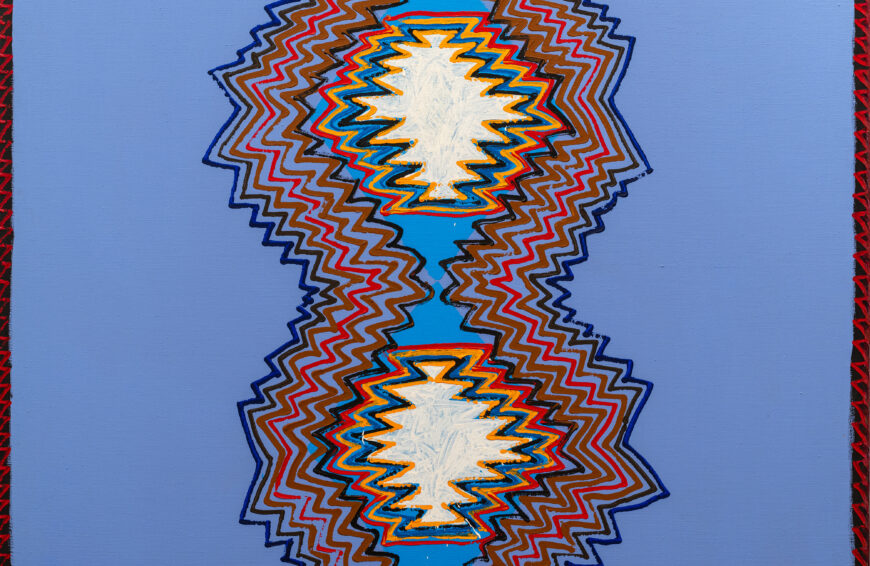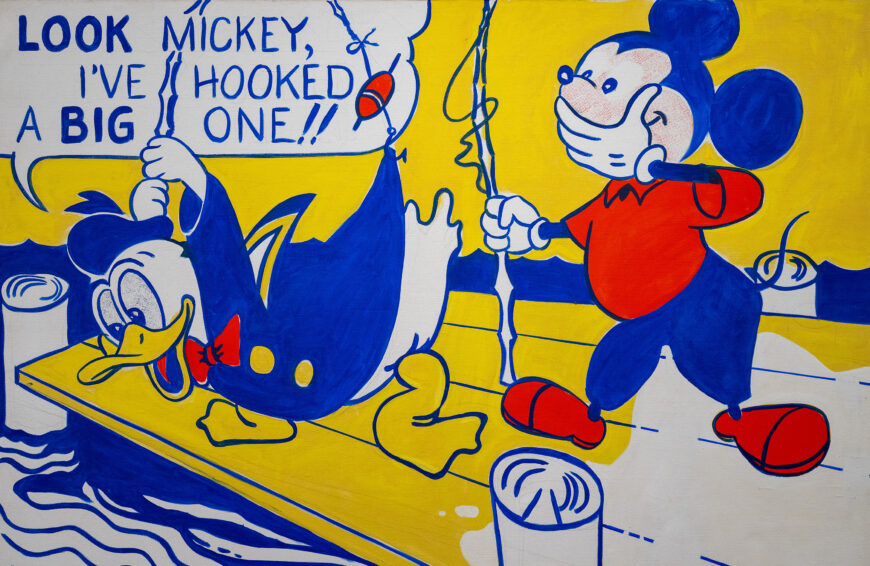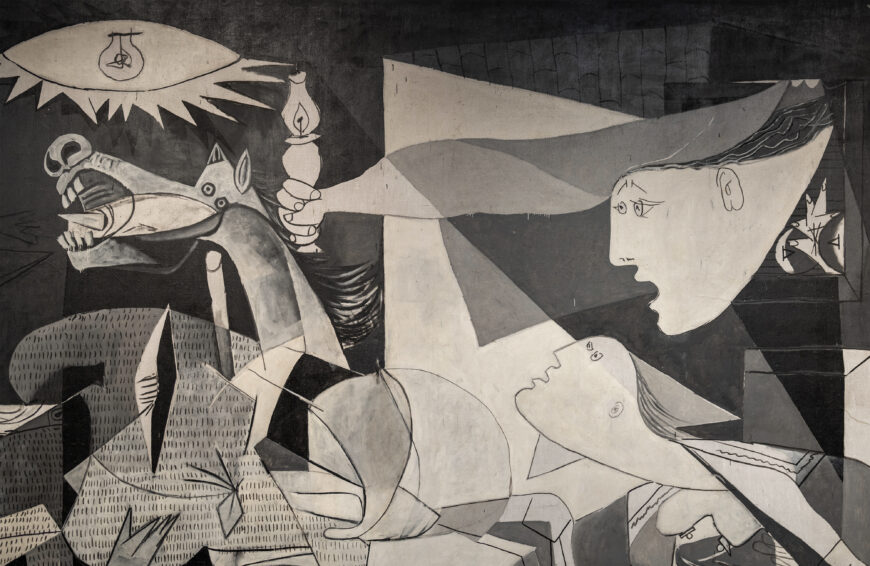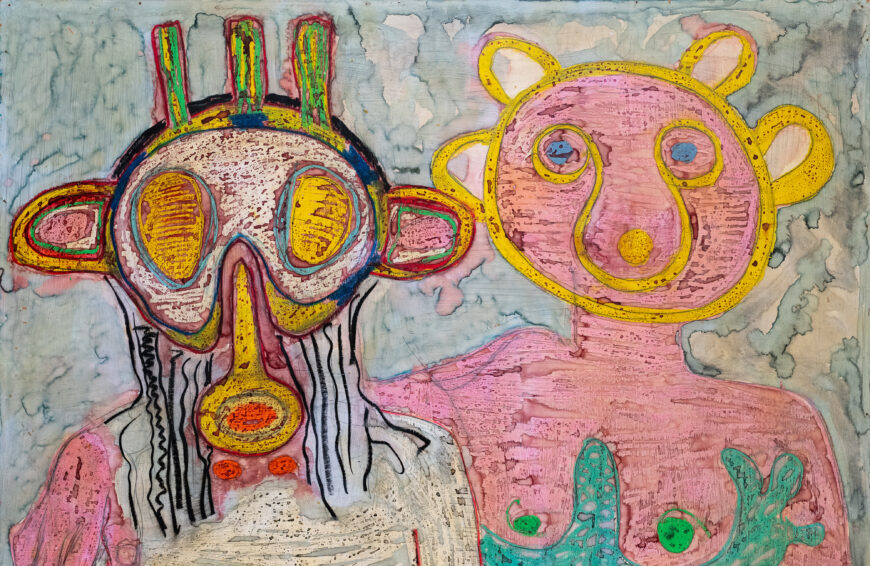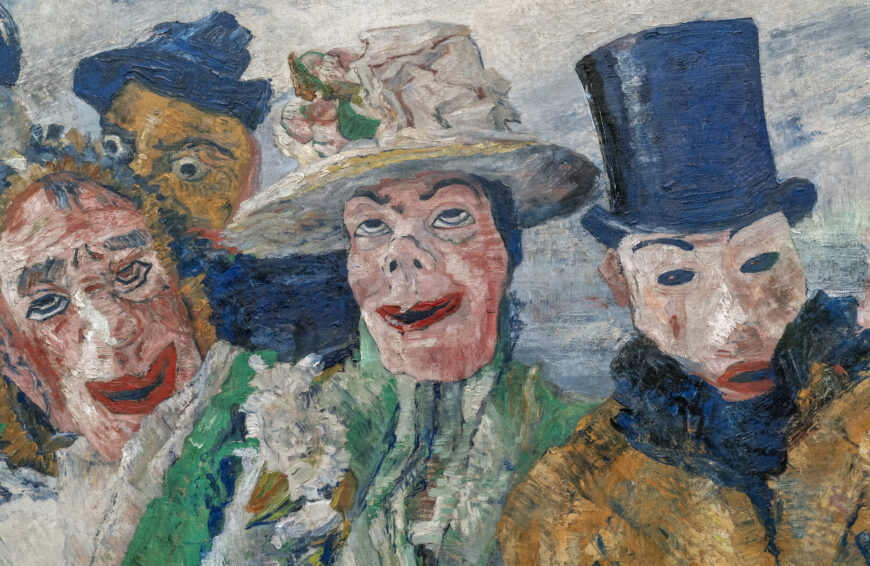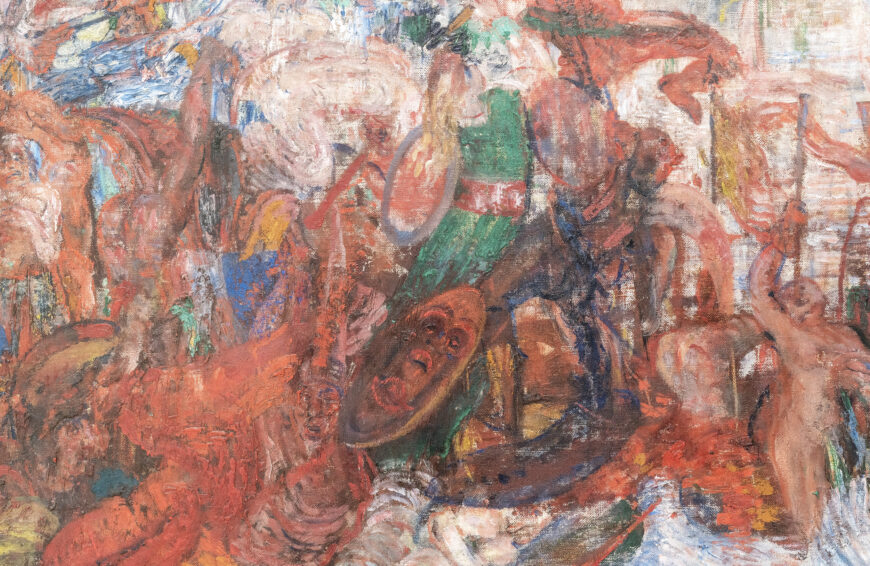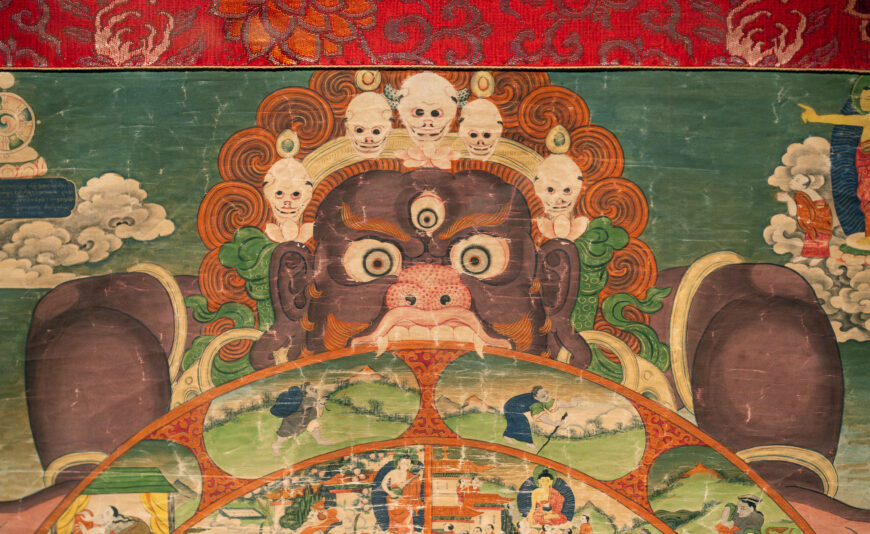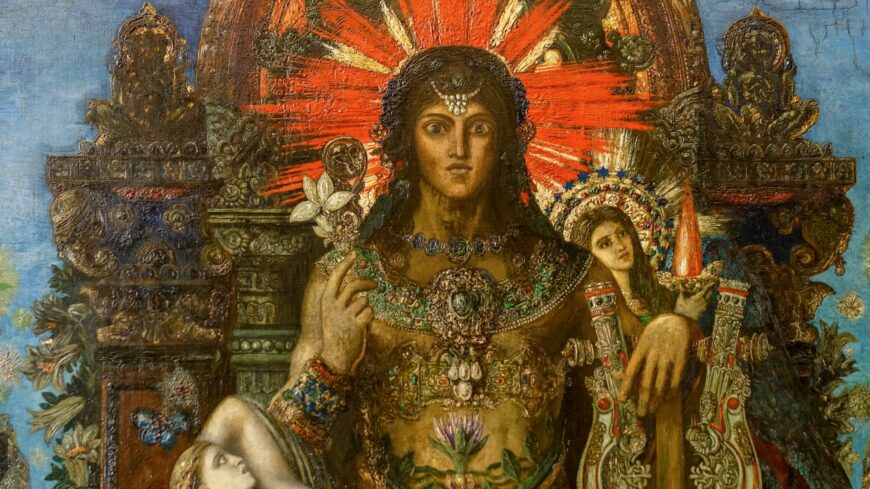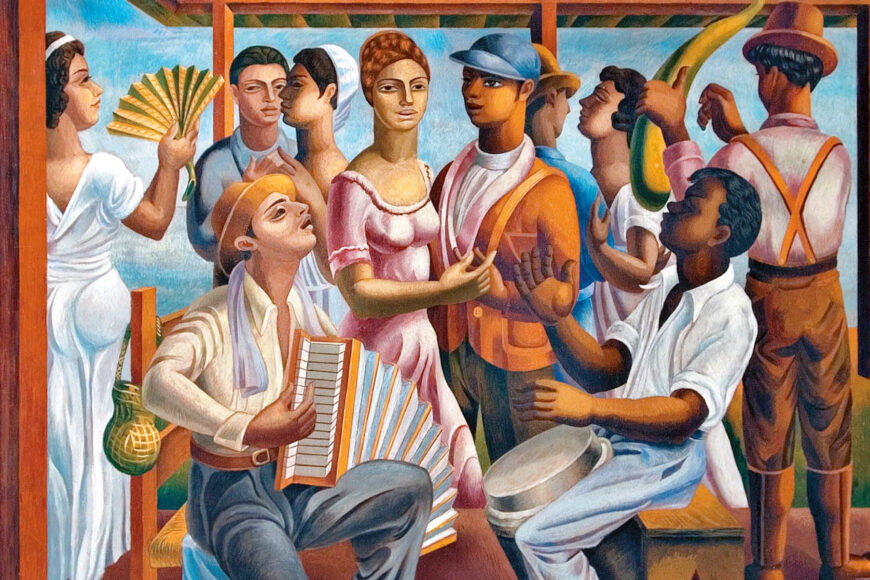Overstreet’s tent-like painting combines the artist’s interest in color field painting and the Black Arts Movement.
Joe Overstreet, Boxes, 1970, acrylic on constructed canvas with metal grommets and cotton rope, 292.1 x 171.5 x 121.9 cm (Art Bridges) © estate of the artist. Speakers: Shilpi Chandra, Assistant Curator, Hudson River Museum and Steven Zucker, Smarthistory




